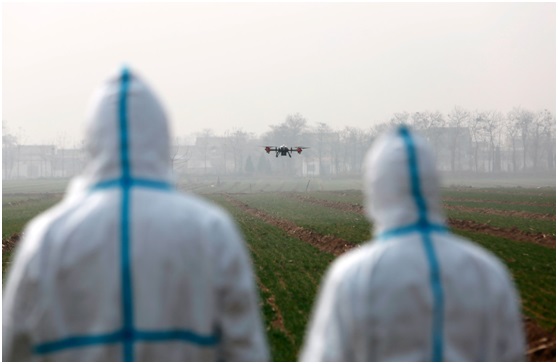Chinese small agricultural households, the biggest part of the country’s agricultural population, are joining a national drive to pursue modernized agriculture, with the help of new technologies and better commercial services.
The change comes as the accelerated pace of urbanization has resulted in a shift in distribution of urban and rural population. China now has 564 million people living in the countryside.
Before China attains its goal to build a moderately prosperous society in all respects, the toughest task it needs to conquer is rural issue, which constitutes the shortest board blocking the way, said Chen Xiwen, chairperson of the Agriculture and Rural Affairs Committee of the 13th National People’s Congress (NPC) of China.
China’s agricultural sector is still dominated by the model of farming by small agricultural households. According to the third national agricultural census, smallholders took up more than 98 percent of the entities engaging in agriculture-related work, and they cultivated 70 percent of the arable land nationwide.
In order to bring these farmers onto the track of modernized agriculture, some rural areas have adopted new technologies to improve production efficiency. Drones, for instance, have been employed to give a helpful hand.
Farmers in Weinan, a city in northwest China’s Shaanxi province, are now assisted by drones to remove weeds, sow seeds and splash pesticides, after they place an order for the service via their mobile phones. The Internet Plus model and the drones have accelerated the process of agricultural modernization there.
Commercial services were also optimized to speed up the modernization pace. Jinxi county in east China’s Jiangxi province, in recent years, devoted great energy to poverty alleviation through e-commerce.
So far, the county has established 10 large e-commerce trading centers, 112 e-commerce service centers, 64 agricultural service stations and 17 express delivery centers at county- and village-level to help with the sales of agricultural products.
By linking the businesses, agricultural cooperatives and farmers together, the commercial services addressed their headaches in marketing channel and led local residents to prosperity.
China’s basic rural operation system is household-based, Chen said, adding that the country’s national conditions and rural development status have decided that large-scale agricultural operations are not necessarily the best mode.
Given the backdrop, China, when making policies, has been improving supporting policies for household farmers, bettering services for them and guiding them towards modern agriculture, while encouraging moderate operations in various forms, added the NPC deputy.
In the future, the country will place priority on the cultivation of family ranches and cooperatives as two new types of agribusiness, he said, suggesting effective implementation of the policies to involve small agricultural households into modernized agriculture system.
Chen added that the mechanisms connecting household farmers with cooperatives or companies need to be solidified, in a bid to foster a prosperous agricultural industry and make farming a decent career.
Source: People’s Daily
Photo taken on March 3, 2019 shows technicians operating a drone to remove weeds in a wheat field in Weinan, northwest China’s Shaanxi province. (Photo by Cui Zhengbo from People’s Daily Online)










Leave a Comment